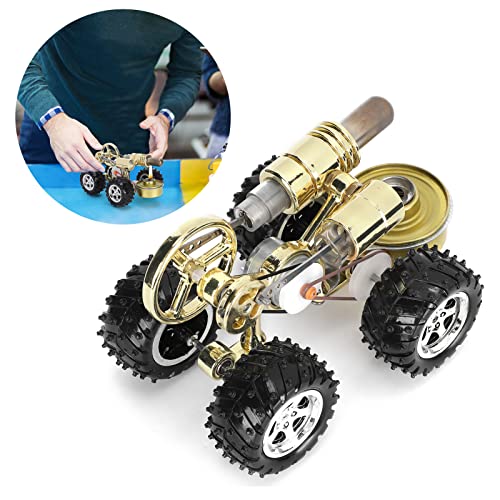I was doing some calcs for the gear train for the 2 stroke diesel I am building and was thinking about the possibility of adjusting the cam timing when the engine was running. Say, for changing the injection advance and retard curve. Here is a method that is new to me, but might be old news to some. I don't really know. But I do know that "real" new ideas are hard to come by.
Here is the plan for changing the cam (or any gear) timing. You start with 3 gears installed in a straight line. The drive gear, an idler, and the driven gear. In the example, all gears are 36 tooth mod1 metric. They are installed such that there is almost no backlash. The center idler is mounted on a small cross slide so that it can be pushed off the straight line axis +/- 1MM.
In the top picture you can see that all 3 gears are in line and at a 36mm center distance. You can see the zero point of one tooth on the drive gear and one tooth on the driven. While the engine is running if the cross slide of the idler is pushed 1 mm off center, the zero tooth on the output gear will rotate 6 degrees. Also, if you pull the idler to the other side of the centerline by 1mm, the gear will rotate a total of 12 degrees to allow for a +/- 6 degree timing change. The movement of the idler gear could be done with a governor, or by hand, for starting for example.
The change in the backlash of the gear train was a concern, but calculations show that moving the idler 1mm off center changes the center distance only .014 mm, and the backlash of the entire gear train only changes by
2 x (the change in center distance) x the tangent of the pressure angle of the gear.
Twenty (20) degrees is a common pressure angle. The math is shown in the picture.
For the example shown, the driven gear can rotate +/- 6 degrees (+/- 2mm on the circumference), but the backlash only varies from approximately zero to .010mm (.0004"), which I think is acceptable for most applications.
Thanks for taking a look and let me know if I missed something or if you have seen this method before.
Thanks,
Lloyd

Here is the plan for changing the cam (or any gear) timing. You start with 3 gears installed in a straight line. The drive gear, an idler, and the driven gear. In the example, all gears are 36 tooth mod1 metric. They are installed such that there is almost no backlash. The center idler is mounted on a small cross slide so that it can be pushed off the straight line axis +/- 1MM.
In the top picture you can see that all 3 gears are in line and at a 36mm center distance. You can see the zero point of one tooth on the drive gear and one tooth on the driven. While the engine is running if the cross slide of the idler is pushed 1 mm off center, the zero tooth on the output gear will rotate 6 degrees. Also, if you pull the idler to the other side of the centerline by 1mm, the gear will rotate a total of 12 degrees to allow for a +/- 6 degree timing change. The movement of the idler gear could be done with a governor, or by hand, for starting for example.
The change in the backlash of the gear train was a concern, but calculations show that moving the idler 1mm off center changes the center distance only .014 mm, and the backlash of the entire gear train only changes by
2 x (the change in center distance) x the tangent of the pressure angle of the gear.
Twenty (20) degrees is a common pressure angle. The math is shown in the picture.
For the example shown, the driven gear can rotate +/- 6 degrees (+/- 2mm on the circumference), but the backlash only varies from approximately zero to .010mm (.0004"), which I think is acceptable for most applications.
Thanks for taking a look and let me know if I missed something or if you have seen this method before.
Thanks,
Lloyd






























![DreamPlan Home Design and Landscaping Software Free for Windows [PC Download]](https://m.media-amazon.com/images/I/51kvZH2dVLL._SL500_.jpg)































![MeshMagic 3D Free 3D Modeling Software [Download]](https://m.media-amazon.com/images/I/B1U+p8ewjGS._SL500_.png)


